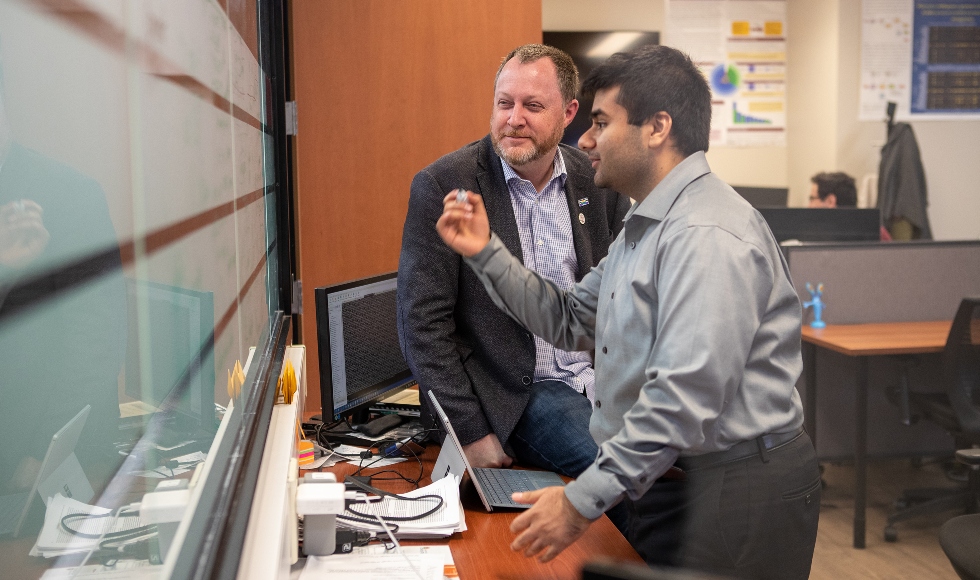Let me start with the usual and widely accepted narrative: AI is emerging as a major technological disrupter in medicine, crunching lots of data, providing accurate diagnosis and treatment. But it will (and can) never replace a doctor even in specialties amenable to machine-driven automation such as radiology or dermatology1. However, these assumptions are based on the current paradigms of medicine constrained by the boundaries of current cognitive abilities. Are we oblivious to a paradigm shift happening in medicine?
The human genome mapping project2 and the subsequent democratization of the ‘omics’ fields promised the new paradigm of ‘personalized medicine’ which never really materialized (at least till now)3. AI (used here as an encompassing term including big data analytics and machine learning) can potentially take personalized medicine to the realm of holistic medicine. Time will tell whether this paradigm shift will materialize. But it is important to understand how some of the concepts that we take for granted may get redefined and reconceptualized in the new paradigm (if it happens), just as modern medicine emerged from natural and alternative medical traditions.
The major tenets of modern medicine are diagnosis, prognosis and therapeutics (treatment). Diagnosis is the process of bucketing a given case into a pattern of observations that has been previously characterized — often represented by a recognizable name. Diabetes, Hypertension and typhoid fever are examples. The prognosis and the treatment depend on the diagnostic label assigned. Patterns that do not fit into the list emerge from time to time. A pattern that resembled pneumonia that emerged recently in Wuhan, China, caused by a coronavirus was labelled SARS-Cov-2. A common use case of AI in medicine is to assign a given set of observations into one of these named entities (diagnostic decision support systems). The clinical community argues that AI can help a clinician in this process, but cannot replace him or her. One of the main reasons for the clinician’s self-belief in irreplaceability is the fact that AI learns from existing labels — the training data set — that the clinicians themselves prepare.
The process of making a diagnosis is to reduce the stochastic observations in the human body into a set of named patterns (diagnoses) that humans can comprehend, identify and utilize. In an AI-dominated world ‘diagnoses’ lose their relevance as the machines can recognize, identify and utilize a potentially infinite number of patterns and entities. Even if ‘diagnoses’ exist, their number is likely to be huge, much beyond the cognitive capabilities of humans.
Currently, the prognosis of any disease state is based on limited observations and limited data points. Big data will extend these limits thereby making prognostic predictions more accurate. Machine learning models that drive such predictions are likely to be at best partially explainable and at worst complete black boxes. However, explainable or not, such prognostic predictors are likely to improve health system optimizations. The role of clinicians is going to be identifying the variables to optimize.
In the therapeutics realm, AI may push us closer to the promised personalized medicine. Traditional clinical research relying mostly on the ‘rigorous’ randomized controlled trials (RCT) may lose its relevance in the new paradigm. Some argue that RCTs have already become unsustainable with long turnover times and mounting costs. With no two humans having the same omics profile — the level of abstraction introduced by a statistically significant difference between the ‘random’ treatment and control groups — is useful for humans, but not for AI. The emerging methods such as nanotechnology, nanorobotics and 3D printing, combined with advanced predictive analytics, molecular modelling and drug designing would lead to tailored interventions that are created ‘just-in-time’ for every individual according to his or her needs. This process is likely to be beyond the reach of human comprehension, but human intervention may be needed to maintain the flow of data through the system.
‘Health’ is another concept that is taken for granted as something that everybody can instinctively understand. Health is widely recognized as a state of absence of disease. As disease/diagnosis states become infinite, ‘health’ may need a reconceptualization too. Let us call it Health 3.0 for now. Medicine ceases to be the art of restoring health but optimizing Health 3.0. I do not attempt to provide a framework to define Health 3.0 here, but posit that it will include abstract concepts such as happiness and quality of life, paradoxically beyond the cognitive capabilities of AI.
Clinicians may still be irreplaceable, but in helping AI to define health!
Some of the changes that AI and allied technologies can bring are already visible. The omics fields have introduced several subcategories of existing diagnostic entities4. In most cases, clinicians ignore these subtypes, seeing things at a higher and manageable level. Reinforcement Learning (RL) algorithms can potentially learn from big data that are not labelled by clinicians5. RL is closer to cognitive computing — computerized models that simulate human thought — optimizing ‘reward’, a concept closer to Health 3.0. Computer-aided drug design is becoming increasingly popular supplemented by an enormous amount of data derived from electronic medical records6.
I am neither trying to predict the future impact of AI in medicine nor arguing for or against the role of ‘human’ clinicians. The media and the scientific literature are replete with stories of AI approaching and in some cases surpassing, the clinicians in certain tasks. AI may not be an incremental disrupter that may change the way we practice. As paradigms change, some of the questions that we ask today such as — Can AI make the correct diagnosis, Can AI choose the correct treatment — may lose relevance? AI may never replace doctors, but it may change what doctors do and may take us a step closer to holistic medicine!
References
- 1.Karches KE. Against the iDoctor: why artificial intelligence should not replace physician judgment. Theor Med Bioeth. Published online April 2018:91-110. doi:10.1007/s11017-018-9442-3
- 2.Collins FS. The Human Genome Project: Lessons from Large-Scale Biology. Science. Published online April 11, 2003:286-290. doi:10.1126/science.1084564
- 3.Chen R, Snyder M. Promise of personalized omics to precision medicine. WIREs Syst Biol Med. Published online November 26, 2012:73-82. doi:10.1002/wsbm.1198
- 4.Boyd S, Galli S, Schrijver I, Zehnder J, Ashley E, Merker J. A Balanced Look at the Implications of Genomic (and Other “Omics”) Testing for Disease Diagnosis and Clinical Care. Genes. Published online September 1, 2014:748-766. doi:10.3390/genes5030748
- 5.Chen M, Herrera F, Hwang K. Cognitive Computing: Architecture, Technologies and Intelligent Applications. IEEE Access. Published online 2018:19774-19783. doi:10.1109/access.2018.2791469
- 6.Qian T, Zhu S, Hoshida Y. Use of big data in drug development for precision medicine: an update. Expert Review of Precision Medicine and Drug Development. Published online May 4, 2019:189-200. doi:10.1080/23808993.2019.1617632







